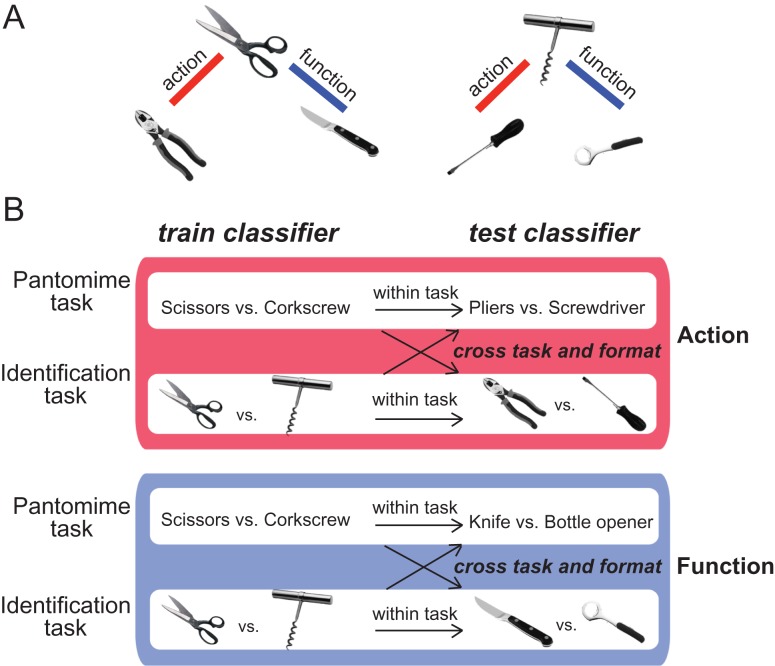Figure 1.
Schematic of cross-item multivoxel pattern analysis. (A) From the perspective of the experimental design, the stimuli are organized into 2 triads, in which 2 of the 3 items (of a triad) were similar by manner of manipulation or function. (B) To decode action, the classifier was trained to discriminate, for example, “scissors” from “corkscrew” and the classifier was then tested on “pliers” versus “screwdriver”. Because the action of using scissors is similar to that of using pliers, and likewise for corkscrew and screwdriver, accurate classification across objects indicates that the voxels being classified differentiate the action representations over and above the specific objects themselves. The same procedure was used to decode object function.

